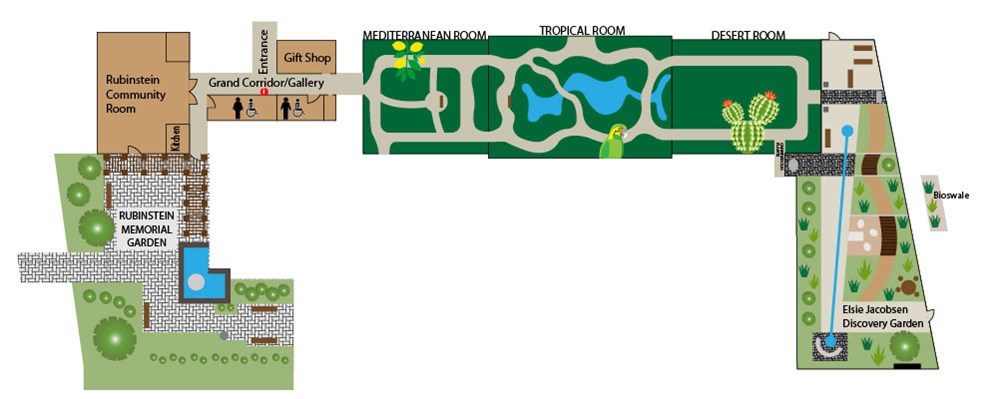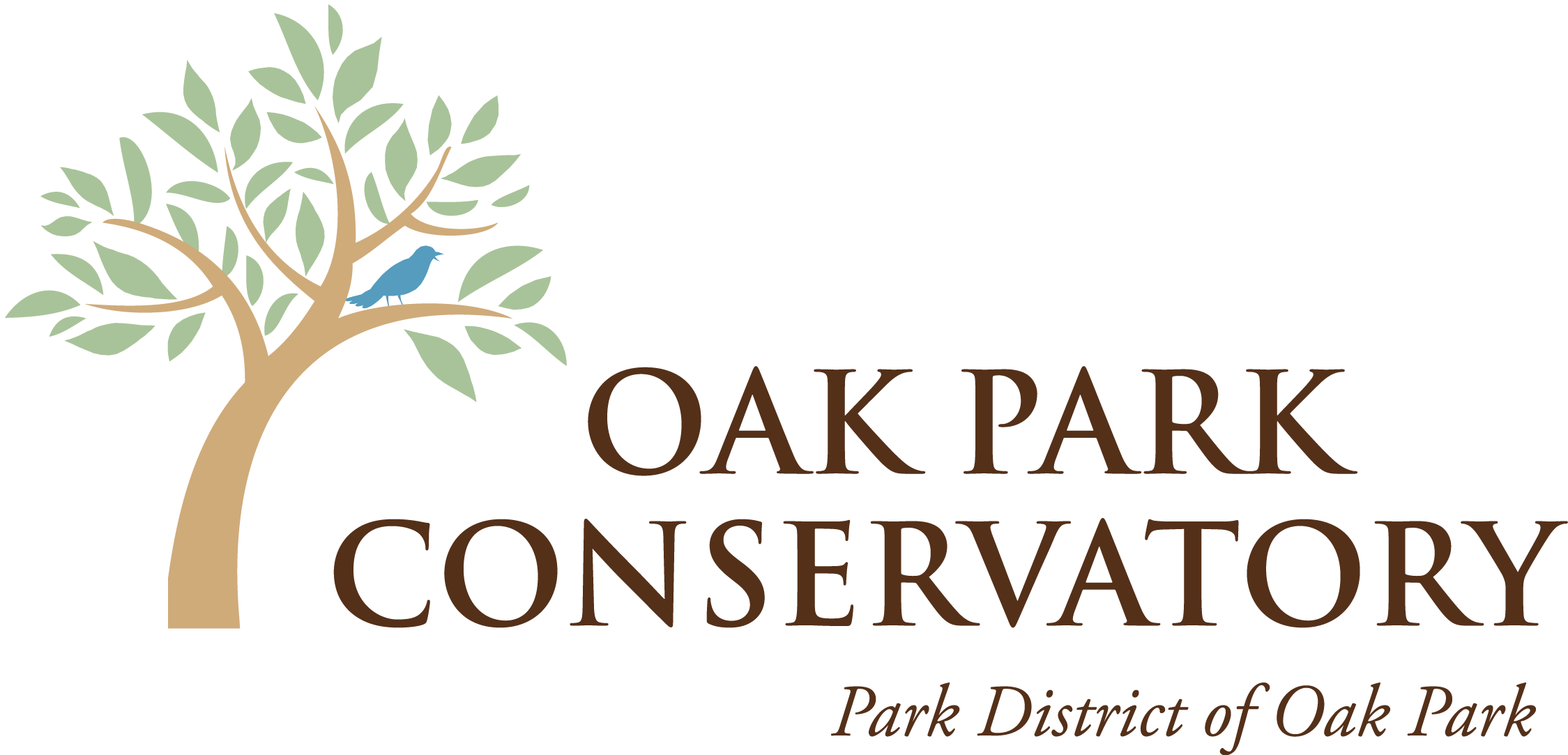Display Houses & Gardens
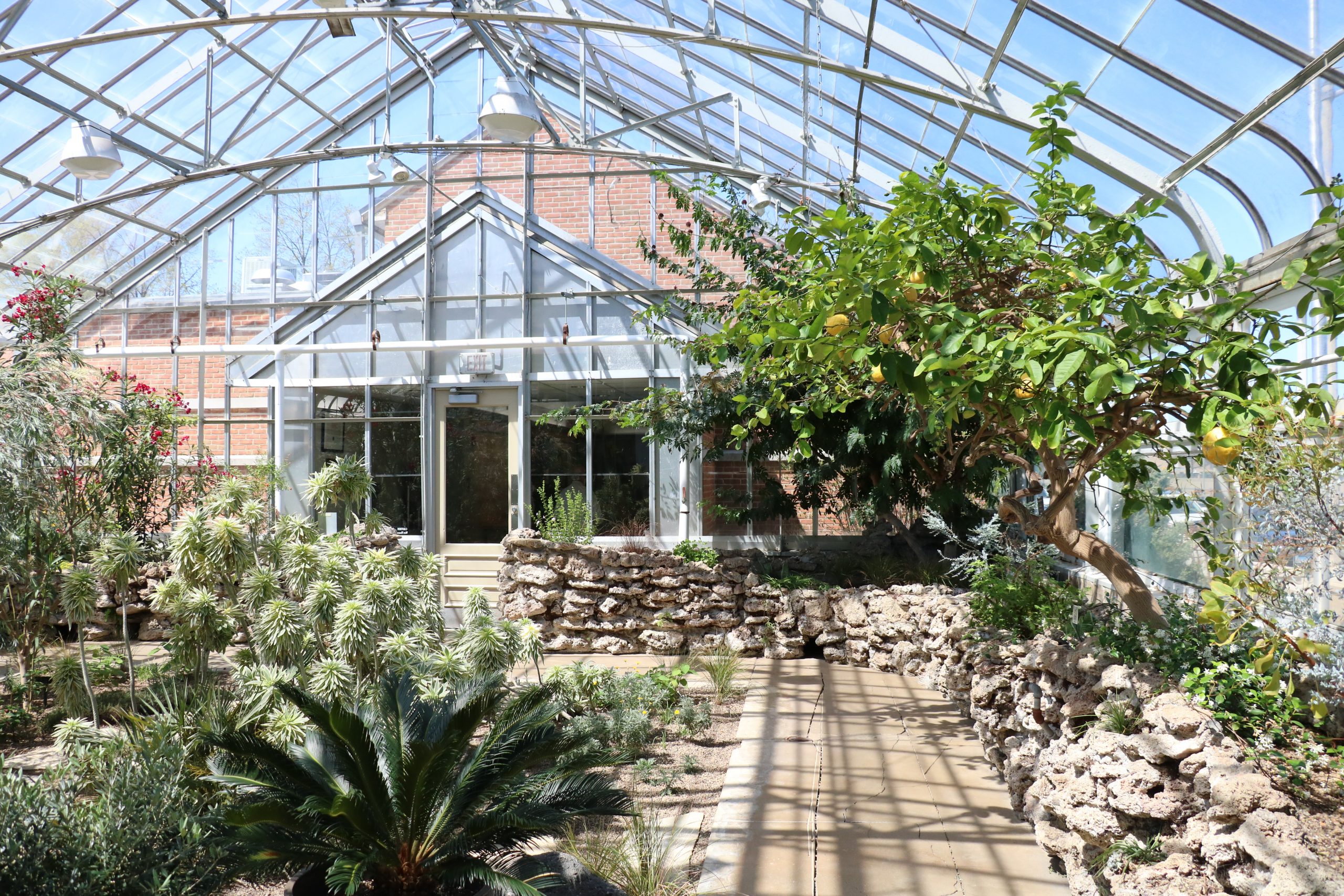
Mediterranean Room
Plants in the Mediterranean room come from the world’s Mediterranean regions including the coasts of California, central Chile, the western cape of South Africa, and areas in western and southern Australia. These ecosystems have summers that can be desert-like with intense sunlight, low humidity, and high heat. The winters in turn are mildly cool. The soil is low in organic matter and nutrients, containing rocky matter susceptible to erosion.
Plants in these regions have adaptations much like desert plants that can withstand the intense dry summers. Some of our favorite herbs are native to the Mediterranean basin and are growing in this room: lavender, rosemary, common sage, thyme, and bay laurel. Mediterranean plants boast colorful flowers, aromatic foliage, capturing the beauty and essence of the region. Fragrance draws you in with citrus trees including visitor’s favorite, the Ponderosa Lemon.
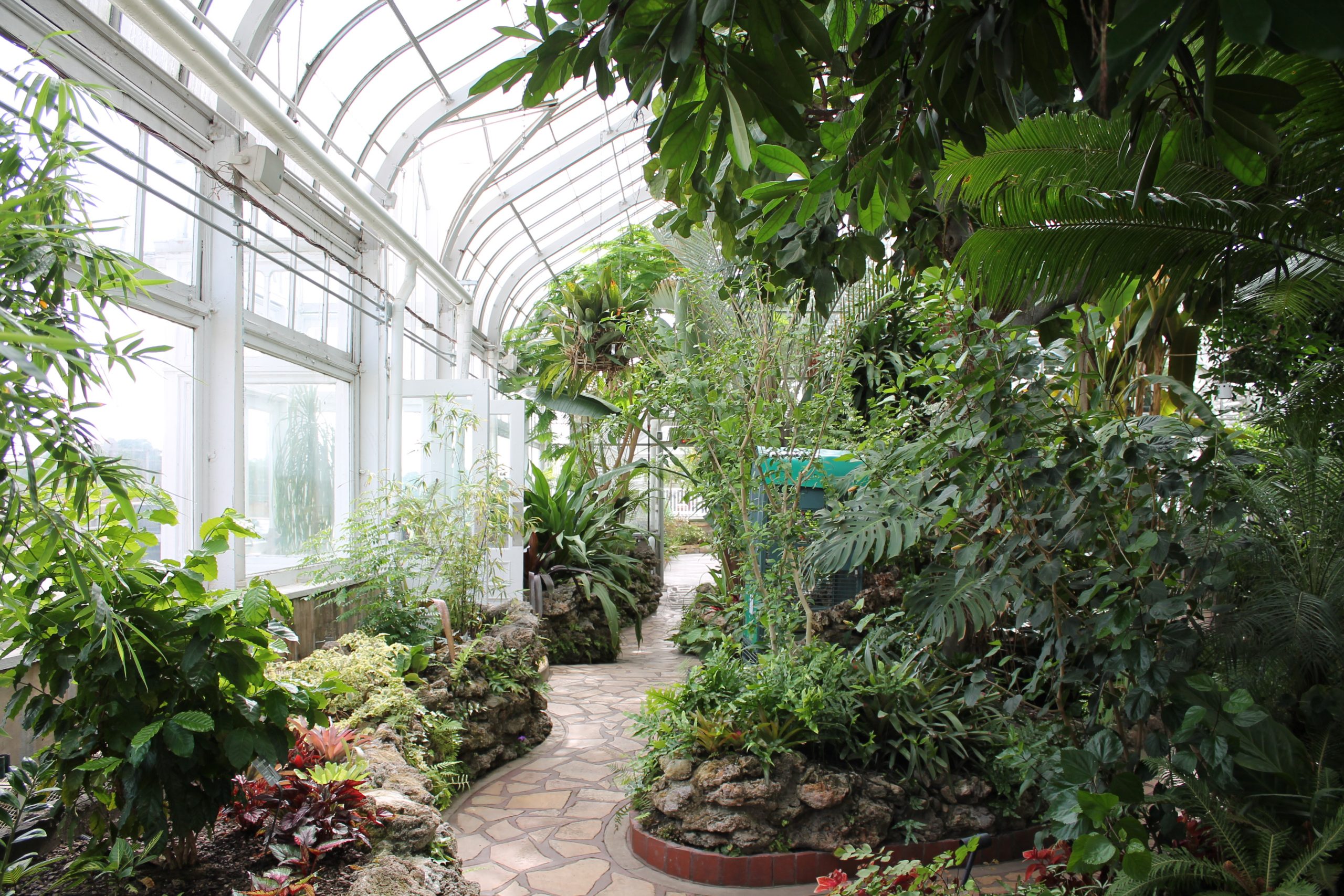
Tropical Room
Humidity is high, light is filtered, and the air is filled with sounds of falling water and tropical birds. Cross over a central pond, home to large Koi fish. Look around and experience three levels of vegetation. Large fig trees provide the upper canopy of this room with fruit-bearing banana and papaya trees that reach up to the sun. A giant anthurium, a white bird of paradise, and dracaenas inhabit the second story while ferns, pilea, begonias, and peperomia cover the ground. Find the large-leaved aroid, Monstera deliciosa, climbing through the limbs of the fiddle-leaf fig tree. Cycads, a plant species older than the dinosaurs, also flourish in this room along with members of the Palm family, the Lady, Fishtail, and Fan palm.
A room lush in sounds, textures, shapes, and shadows; a trip through the tropics right here in Oak Park.
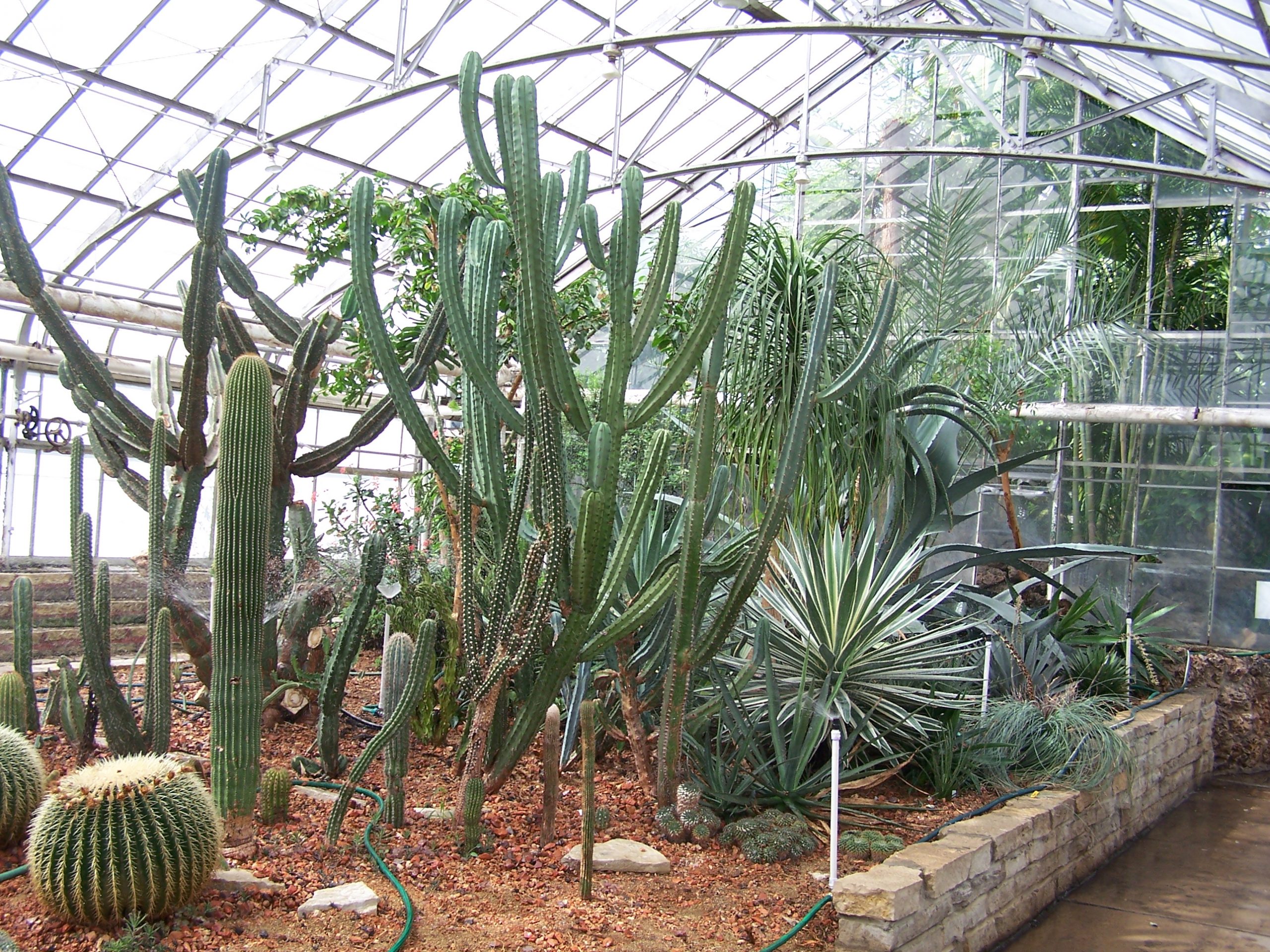
Desert Room
The desert environment, unfamiliar to the Midwest, provides a counterpoint to the humidity of the Tropical room. Extremely dry air and wide temperature shifts push plant adaptation to its limits. Search out plants whose leaves have evolved into thorns and plants whose thick green stems carry out photosynthesis. Our exhibits of three main subgroups of cacti—cereus, optunia, and pereskia—fascinate children and adults alike. Our distinctive collection of desert plants also features a fine display of other succulents including haworthia, kalanchoe, gasteria, crassula, and succulent euphorbias.
Don’t leave this room before seeing the agaves or “century plants” which grow for 25 to 30 years before sending up their tall flower stalk. While in this room, visit our carnivorous plant collection with its Venus flytraps, pitcher plants, and sundews.
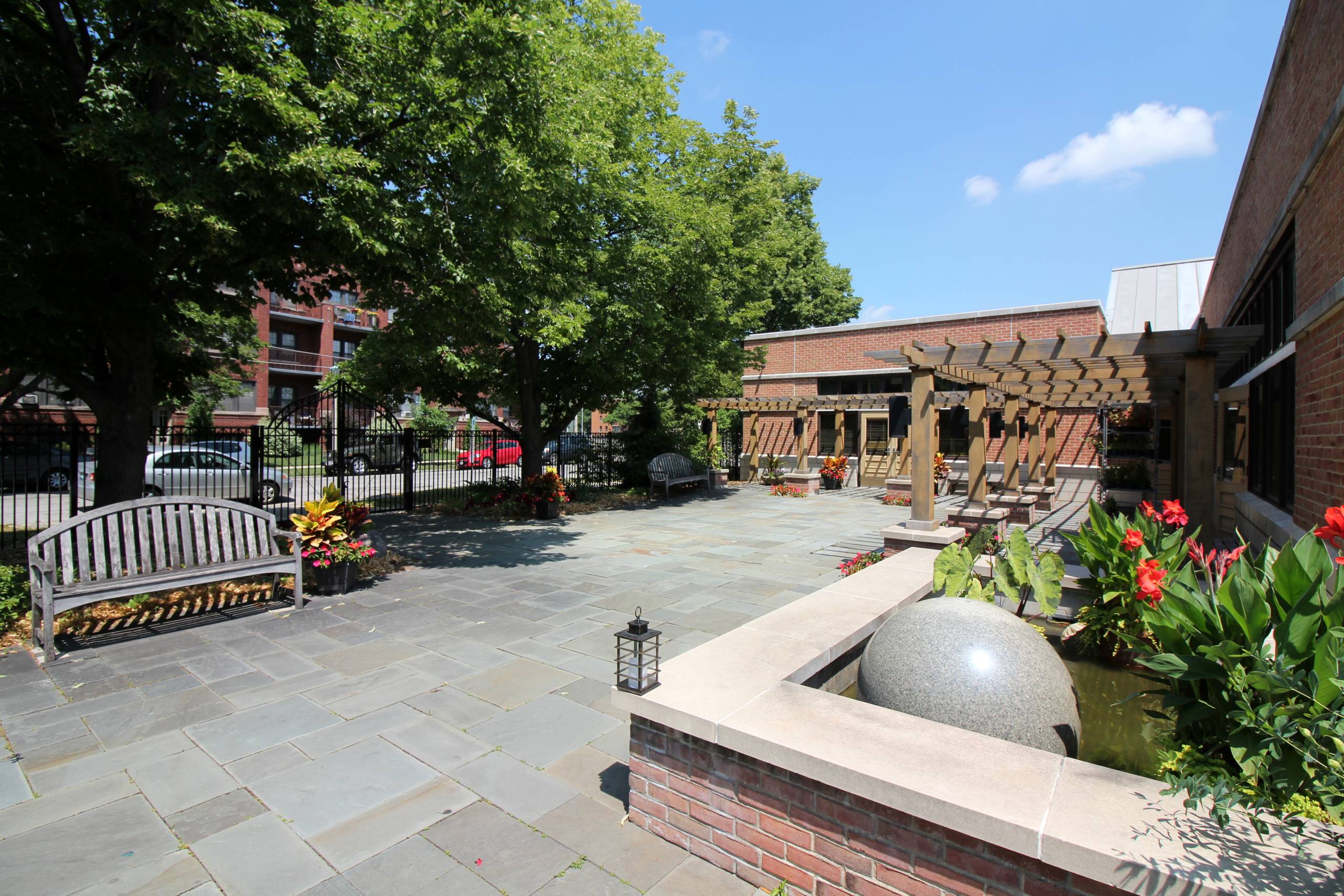
Herbert M. Rubinstein Memorial Garden
The Herbert M. Rubinstein Memorial Garden welcomes visitors to the Conservatory and provides a place to relax and refresh. Opened in 2011 the Garden features a bluestone patio area, wood pergola, plant wall, garden lighting and garden benches. It is enclosed by an ornamental fence with a gate on the Clarence Street side of the Conservatory. The Garden is planted with a variety of trees, shrubs and perennials, including many native plants.
Herbert M. Rubinstein, for whom the garden is named, was a doctor at Loyola University Hospital and a clinical professor of medicine and orthopedics. With his wife, Elvira, Dr. Rubinstein co-founded the Friends of the Oak Park Conservatory in the mid 1980’s. The Rubinstein Memorial Garden is open to the public during Conservatory hours and is available for rental.
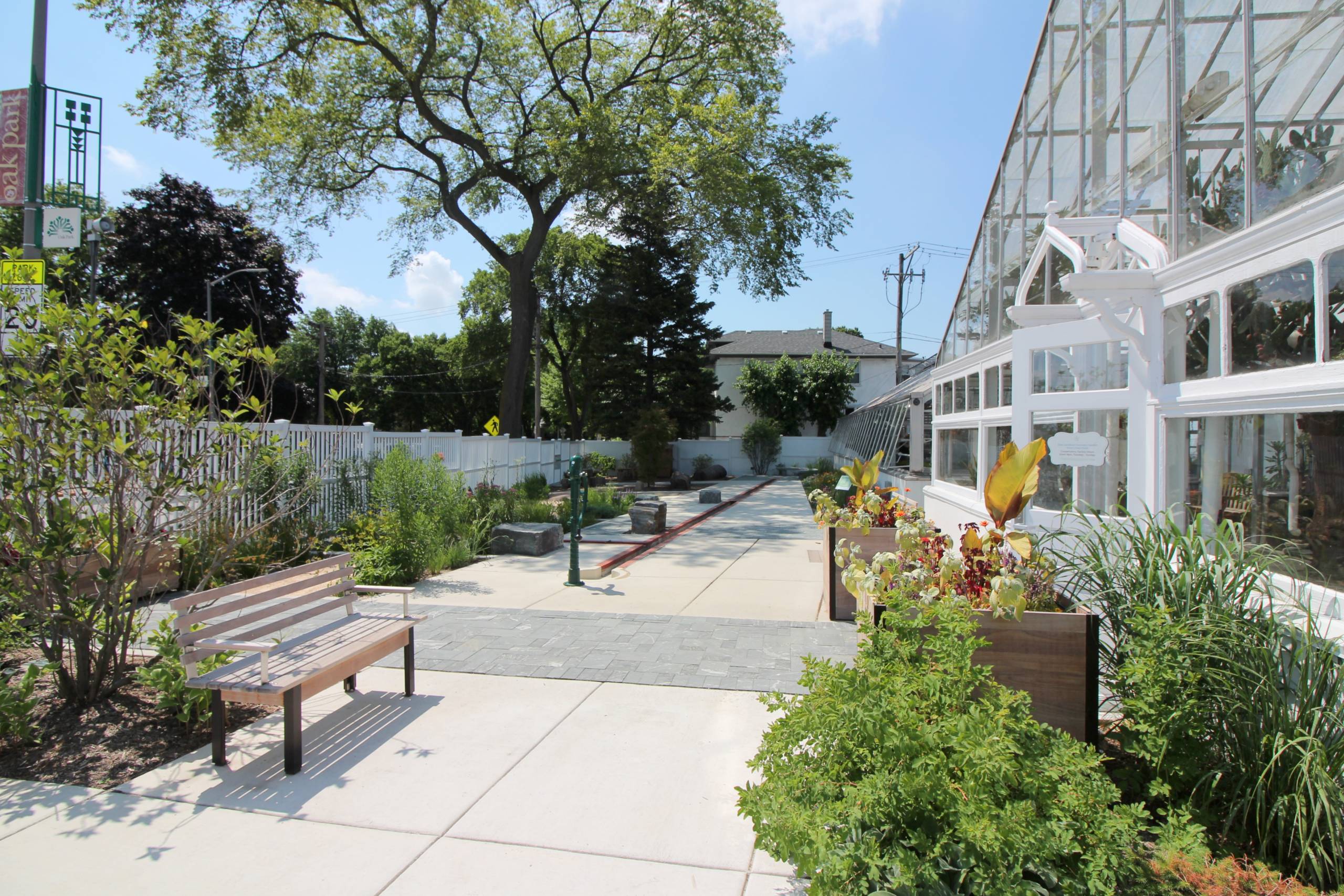
Elsie Jacobsen Discovery Garden
The basis of the design for the Elsie Jacobsen Discovery Garden was drawn from nature’s four essential elements: light, water, air, and earth. Earth is represented on the south end of the Garden in the wooded area. Air is represented with the use of stone and dry plant beds that feature drought tolerant greenery. Water is represented with our water feature, called a runnel, and an area featuring aquatic plants. Light is represented on the north end of the Garden through the bright colored seasonal displays featured in the containers near the garden entrance. Most plants featured in the Garden are native to Illinois or are native cultivars and have been chosen to give our Conservatory visitors of all ages an opportunity to observe, touch, and interact with nature in all seasons. Musical instruments and a bee skep clubhouse offer young visitors a place to explore.
The Garden’s namesake, Elsie Jacobsen, had a broad and significant impact on not only the Oak Park Conservatory and the Park District of Oak Park, but also on the Village of Oak Park and its citizens. Ms. Jacobsen was responsible for the “Save the Garfield Conservatory” (currently known as the Oak Park Conservatory) drive in 1970, which raised awareness and funds for the restoration of the Oak Park Conservatory.
Conservatory Map
